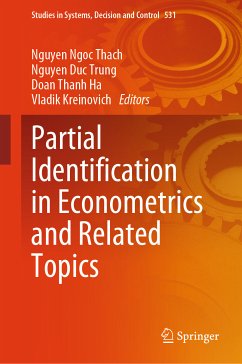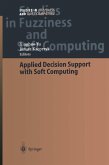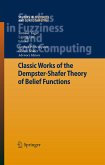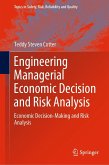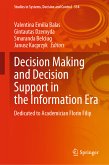This book covers data processing techniques, with economic and financial application being the unifying theme. To make proper investments in economy, the authors need to have a good understanding of the future trends: how will demand change, how will prices change, etc. In general, in science, the usual way to make predictions is:
In many practical situations-especially in economics-our past experiences are limited. As a result, the authors can only achieve a partial identification. It is therefore important to be able to make predictions based on such partially identified models-which is the main focus of this book. This book emphasizes partial identification techniques, but it also describes and uses other econometric techniques, ranging from more traditional statistical techniques to more innovative ones such as game-theoretic approach, interval techniques, and machine learning. Applications range from general analysis of GDP growth, stock market, and consumer prices to analysis of specific sectors of economics (credit and banking, energy, health, labor, tourism, international trade) to specific issues affecting economy such as ecology, national culture, government regulations, and the existence of shadow economy. This book shows what has been achieved, but even more important are remaining open problems. The authors hope that this book will:
The publication of this book-and organization of the conference at which these papers were presented-was supported:
The authors thank the leadership and staff of HUB and VINIF for providing crucial support.
- to identify a model that best fits the current dynamics, and
- to use this model to predict the future behavior.
In many practical situations-especially in economics-our past experiences are limited. As a result, the authors can only achieve a partial identification. It is therefore important to be able to make predictions based on such partially identified models-which is the main focus of this book. This book emphasizes partial identification techniques, but it also describes and uses other econometric techniques, ranging from more traditional statistical techniques to more innovative ones such as game-theoretic approach, interval techniques, and machine learning. Applications range from general analysis of GDP growth, stock market, and consumer prices to analysis of specific sectors of economics (credit and banking, energy, health, labor, tourism, international trade) to specific issues affecting economy such as ecology, national culture, government regulations, and the existence of shadow economy. This book shows what has been achieved, but even more important are remaining open problems. The authors hope that this book will:
- inspire practitioners to learn how to apply state-of-the-art techniques, especially techniques of optimal transport statistics, to economic and financial problems, and
- inspire researchers to further improve the existing techniques and to come up with new techniques for studying economic and financial phenomena. The authors want to thank all the authors for their contributions and all anonymous referees for their thorough analysis and helpful comments.
The publication of this book-and organization of the conference at which these papers were presented-was supported:
- by the Ho Chi Minh University of Banking (HUB), Vietnam, and
- by the Vingroup Innovation Foundation (VINIF).
The authors thank the leadership and staff of HUB and VINIF for providing crucial support.
Dieser Download kann aus rechtlichen Gründen nur mit Rechnungsadresse in A, B, BG, CY, CZ, D, DK, EW, E, FIN, F, GR, HR, H, IRL, I, LT, L, LR, M, NL, PL, P, R, S, SLO, SK ausgeliefert werden.

